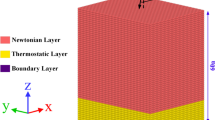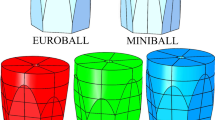2
+ and Al+ at temperatures from room temperature (RT) to 1200 °C at doses of 1013 and 1015/cm2. It is found from Doppler broadening spectra of annihilation gamma-rays obtained by varying the incident positron energy that hot-implantation gives rise to clustering of vacancies, whereas it suppresses amorphization and diminishes the thickness of damaged layers. The average size of such clusters increases with increasing implantation dose and temperature. Vacancy clustering by hot-implantation can be interpreted by the combination of vacancies during implantation. Vacancy type defects in the low-dose (1013/cm2) implanted samples are found to be removed by annealing at 1400 °C, whereas large vacancy clusters still remain after 1400 °C annealing in the high-dose (1 015/cm2) implanted samples. It is also derived from the depth profile of positron diffusion length that positron scattering centers are produced after annealing at 1400 °C in all implanted samples.
Similar content being viewed by others
Author information
Authors and Affiliations
Additional information
Received: 7 March 1997/Accepted: 6 May 1997
Rights and permissions
About this article
Cite this article
Itoh, H., Uedono, A., Ohshima, T. et al. Positron annihilation studies of defects in 3CSiC hot-implanted with nitrogen and aluminum ions . Appl Phys A 65, 315–323 (1997). https://doi.org/10.1007/s003390050585
Issue Date:
DOI: https://doi.org/10.1007/s003390050585




